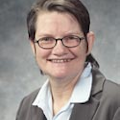WoodMac: Near-term financial risks exaggerated for US independents
The high-growth business models of US independent operators are being tested by low oil prices and tougher access to capital. But two recent Wood Mackenzie Ltd. reports concluded that concerns surrounding October reserves-based lending (RBL) redeterminations have been exaggerated.
The reports appeared as Moody’s Investors Service predicted banks will lower their 2015 fall price decks by 15-25% from their spring 2015 assumptions, “significantly reducing RBL borrowing bases for some E&P companies.”
WoodMac’s Corporate Service Insight, “US Independents: How strong, for how long?”, examines the financial health of 26 independents, concluding that the larger producers have the required flexibility to tide them through the near term at the very least.
Fraser McKay, WoodMac corporate analysis research director, said, “Most companies in the peer group have rising absolute debt levels, and October’s RBL redeterminations have been latched onto as a potential catalyst for sector implosion. But at least two thirds of Lower 48 production is attributable to companies with no RBL exposure at all, or have no redeterminations until 2016.”
Of those larger producers with near-term debt redeterminations, WoodMac estimates most can accommodate a borrowing-base cut of over 50% before their situation becomes imminently critical.
Small companies at biggest risk
McKay said, “We anticipate discomfort in the coming months and expect some more companies will inevitably fail, which is clearly a catastrophic event for lenders and equity holders. However, most of these companies will be small, with preexisting structural portfolio issues. Even in the worst case scenario, the assets of these companies will be salvaged through restructuring or assets sales.”
He believes creditors will keep wells producing as long as possible.
“The strategic actions and cash flow neutrality goals of the largest producers in the sector will have a far greater impact on capital spend and therefore supply,” McKay said.
Concerns regarding the roll-off of hedging protection are warranted. For the 26 independents, WoodMac estimated cash flow from hedging will fall to about $2 billion in 2016 from $9 billion in 2015.
“The most financially stretched operators may be forced to enter into unattractive hedges, just to guarantee debt repayment and satisfy lender conditions,” McKay said.
In a separate analysis titled, “October Borrowing Base Redeterminations: Die Another Day,” WoodMac examined the upcoming borrowing base redeterminations for 17 high-yield operators, concluding that far fewer companies will struggle with liquidity after the October borrowing base redeterminations.
Thomas Rinaldi, WoodMac institutional investor service director, said nearly all operators we looked at have sufficient liquidity to absorb the anticipated decline in their borrowing base this October.
“That said, as we look forward the next 12 months, closer to one third of these companies will need to adjust their activity levels, capital structure or make asset sales, this assuming no change in the price deck applied by lenders. The handful of high-yield operators without the required liquidity to make it through the next 12 months account for an insignificant amount of production,” Rinaldi said.
He added that development drilling consumes cash, but few consider the added liquidity provided by the resulting added production. “Banks basically lend on the net present value (NPV) of production so even if development well breakevens are below the bank price deck, the capex is partially offset by a larger base from which to borrow,” Rinaldi said. “When we take that added production and the related increase to the borrowing base into consideration, the time to liquidity crisis for many becomes much more manageable for most.”
For a debt financing, a producer typically is required to engage an independent third-party engineer who produces a reserve report that estimates the net present value of current and forecast revenue stream from existing wells, wells being drilled, and prospects (UOGR, Sept./Oct. 2015, p. 20).
In conclusion, WoodMac emphasized October bank redeterminations will not be the end of the road for the US unconventional sector, and expects most US independents, even many high yield operators, to survive.
The Moody’s view
In its report, Moody’s said reduced borrowing bases will force some companies to try to enhance liquidity by finding alternate funding sources, improving margins, or limiting capital spending.
“For most producers, higher reserve volumes will not offset the lower bank price decks because they have already cut back on capital spending in 2015 to conserve liquidity and limit negative free cash flow,” Moody’s said. “But, overall, the pain from lower price decks will be fairly limited.”
It based its outlook on a survey of noninvestment-grade companies from a group of 113 independent E&P companies it rates. Forty-eight of 60 surveyed companies have RBL lending facilities.
The firm said E&P companies generally have less production hedged for 2016 than they had in 2015, and hedged oil and gas prices are lower.
“Most E&P companies with active hedging programs today have no significant volumes hedged beyond 18 months,” it said.
Many companies amended credit agreements this year to relax financial covenants or to change test metrics temporarily. A few E&P companies might still need to seek covenant relief.
“However, we expect amendments will be forthcoming for companies that have adequate collateral coverage for their outstanding debt,” Moody’s said.
Contact Paula Dittrick at [email protected].
*Paula Dittrick is editor of OGJ’s Unconventional Oil & Gas Report.
About the Author
Paula Dittrick
Senior Staff Writer
Paula Dittrick has covered oil and gas from Houston for more than 20 years. Starting in May 2007, she developed a health, safety, and environment beat for Oil & Gas Journal. Dittrick is familiar with the industry’s financial aspects. She also monitors issues associated with carbon sequestration and renewable energy.
Dittrick joined OGJ in February 2001. Previously, she worked for Dow Jones and United Press International. She began writing about oil and gas as UPI’s West Texas bureau chief during the 1980s. She earned a Bachelor’s of Science degree in journalism from the University of Nebraska in 1974.
